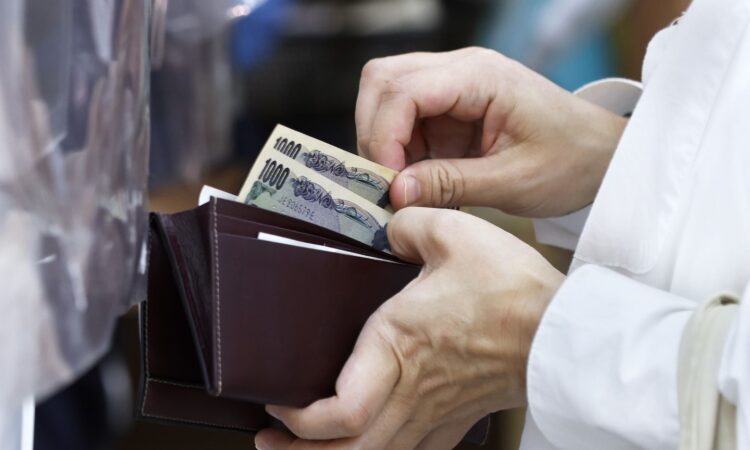
1. Why are foreign-exchange hedges important?
For one thing, a lot of money is involved. Japanese investors are the largest individual group of overseas buyers of Treasuries. The Bank of Japan has set its key rate below zero for the last seven years. That and its firm control of yields through voracious bond-buying programs have led Japanese investors to hunt abroad for higher yields, with returns in their domestic markets squeezed. But with overseas investing comes currency risk: Japanese funds, for instance, have to first convert yen into dollars to buy Treasuries and then exchange their money back into yen when they repatriate the profits. That means that currency swings have the potential to boost or eat into returns.
2. How does an FX hedge work?
To remove the risk of fluctuations in foreign-exchange rates, investors buying an asset overseas can borrow another currency at a fixed rate. For instance, a Japanese investor who’s buying Treasuries can borrow dollars at a fixed rate against the yen. That means they won’t benefit from the appreciation of the dollar, but they will be safeguarded against greenback depreciations curbing their returns when they repatriate their profits. The fixed rate in such deals is largely determined by the short-term borrowing costs of the two currencies involved and the total cost of the hedge can also include a premium to borrow a currency that is in high demand, known as cross-currency basis. Typically, investors have so-called rolling hedges, meaning a hedge expires after some months and has to be renewed, potentially at a new rate.
3. What’s happened to hedging costs?
Several things. The Fed rate hikes have boosted US interest rates. That makes borrowing dollars for hedges on dollar-denominated assets more expensive, reducing returns for overseas investors. And markets have moved into a state of what’s called yield curve inversion, meaning that short-term interest rates, which are usually lower than longer-term rates, are now higher on some parts of the curve. That’s because traders anticipate lower interest rates in the future once inflation is quashed and the Fed undoes its increases. For foreign investors, that can make investing in Treasuries particularly unattractive on an FX-hedged basis, since they’re investing in longer-dated government bonds but hedging by borrowing at short-term interest rates.
On an FX-hedged basis, 10-year Treasury yields return less than Japanese equivalents for domestic Japanese investors. The calculations are based on the cost of a three-month currency hedge for Japanese investors on an annualized basis.
4. How does this affect asset allocation?
In 2022, Japanese investors such as pension funds, life insurers and banks liquidated record amounts of foreign government bonds, with strategists suggesting they may be favoring domestic fixed income instead. Japanese investors bought a net ¥30.3 trillion worth of local government bonds last year, the most since 2012, according to data from the Japan Securities Dealers Association compiled by Bloomberg. Such repatriation may also be driven in anticipation of further shifts in the Bank of Japan’s so-called yield-curve control policy, which could pave the way for higher yields in Japanese government bonds. In Europe, balance-of-payments data suggests that there have started to be repatriation flows, according to strategists at Nomura International Plc, citing ECB figures.
5. What does this mean for the Treasuries market?
The withdrawal of such a major buyer as Japanese investors has sparked alarm about what what might be the consequences for foreign government bond markets, particularly as the retreat is taking place as major central banks unwind their holdings of bonds accumulated under quantitative easing. An acceleration in foreign bond sales due to possible changes in the Bank of Japan’s monetary policy could prompt volatility in the Treasuries market, according to Fitch Ratings. Beyond the US, French and Australian government bonds could be among the worst affected, according to analysts, given they are smaller markets which Japanese investors have typically favored. On the other hand, the currencies of local markets such as the yen or the euro could also benefit from repatriation flows, according to Societe Generale strategists.
• A blog from Brad Setser, senior fellow at the Council on Foreign Relations, on the disappearing Japanese bid for global bonds.
• A primer from Pacific Investment Management Co. on hedging currency risk in bond portfolios.
• Bloomberg’s guide to hedging costs for Japanese investors
• A QuickTake explaining how to hedge currencies
–With assistance from James Hirai.
More stories like this are available on bloomberg.com



